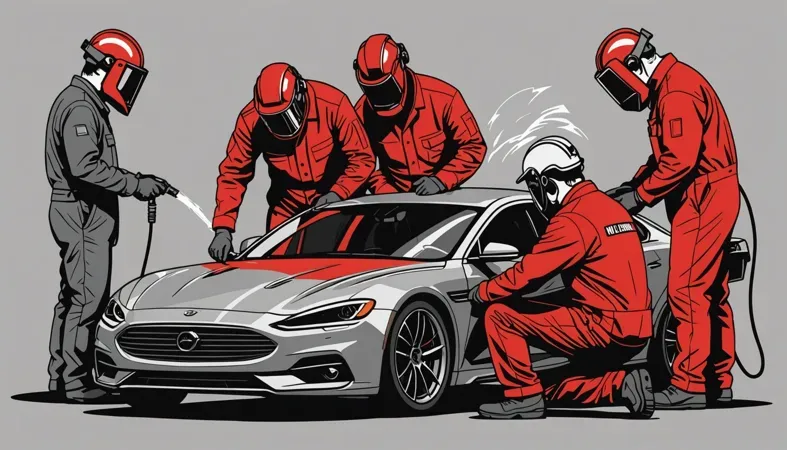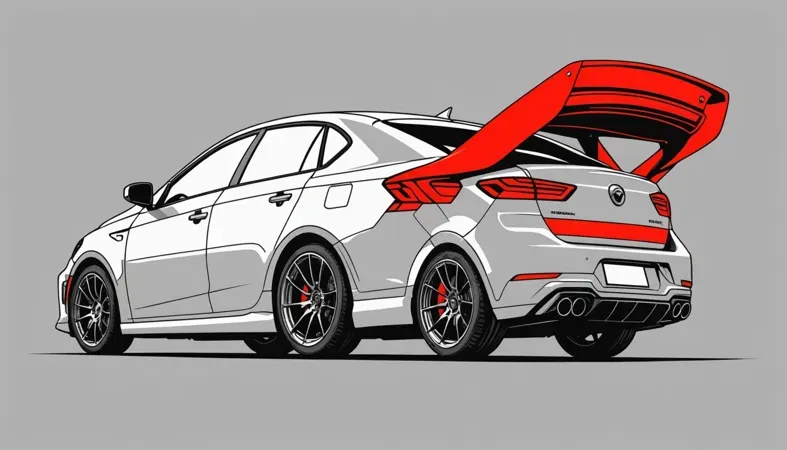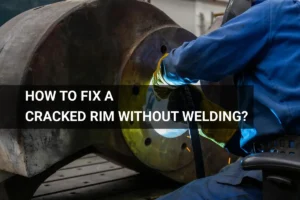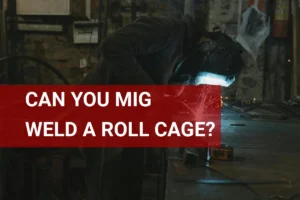What Type Of Welder is Best for Auto Exhaust? | Top Options, Tips, & Techniques
Published on: May 20, 2025 | Last modified: March 4, 2025
By: Joe Carter
Auto exhaust is the system that directs harmful gases out of your vehicle’s engine. It ensures cleaner air and helps your car run smoothly.
You may be wondering what type of welder is best for auto exhaust. Choosing the right welder matters since it affects durability and performance. I’ve learned from experience that the wrong choice can lead to leaks or weak joints, and nobody wants that!
In this guide, we’ll cover various topics surrounding what type of welder is best for exhaust, including types of welders, steps to select the best one, factors to consider, common issues, aftercare, and even alternative options. You’ll get all the basics you need to choose wisely for your exhaust systems.
Contents
- What Type Of Welder is Best for Auto Exhaust?
- What Type Of Welder is Best for Auto Exhaust?
- Types Of Welders for Auto Exhaust
- Steps to Choosing the Best Welder for Auto Exhaust
- Common Issues and Troubleshooting
- Factors Influencing the Best Welder for Auto Exhaust
- Aftercare, Inspection, and Advanced Tips for Auto Exhaust Welding
- Typical Applications for Auto Exhaust Welding
- Advanced Techniques for Auto Exhaust Welding
- What Are the Alternatives to Choosing the Best Welder for Auto Exhaust?
- Frequently Asked Questions (FAQs)
- Conclusion
- References
What Type Of Welder is Best for Auto Exhaust?
MIG welders excel with auto exhaust due to their ease of use and speed. They work well on thin materials, producing clean, strong joints. Commonly, they’re used for exhaust repairs, custom piping, and muffler installations.
What Type Of Welder is Best for Auto Exhaust?
For welding auto exhaust, we mainly look at MIG (Metal Inert Gas) and TIG (Tungsten Inert Gas) welding. MIG welding is often preferred for its speed and versatility, using a wire feed system that melts the filler and base metals together. It’s ideal for thin materials, typically ranging from 0.5 mm to 3 mm thick (0.020 In to 0.125 In), like those in exhaust systems. TIG welding offers precision and control for difficult joints but is more time-consuming.
Experts debate which method to choose, but it depends on your specific needs. For strength and speed, choose MIG. If you prefer fine details and aesthetics, TIG may be better.
If I were you, I’d lean toward a MIG welder for most exhaust repairs. It’s quick and easy to use. Its ability to handle various metals, like stainless steel and aluminum, makes it versatile for different tasks.
Types Of Welders for Auto Exhaust
MIG Welders
MIG welders use a wire feed process for quick and easy welding. For exhaust work, a MIG welder like the Hobart Handler 140 is ideal due to its versatility. To start, choose stainless steel wire, set your gas blend, and practice welds in flat and vertical positions for cleaner joints.
TIG Welders
TIG welders offer precise control, making them great for thin metals like exhaust pipes. For exhaust systems, a TIG welder such as the AHP AlphaTIG 200DX is best. Ensure your materials are clean, choose the right tungsten electrode, and use the correct amperage for a strong, stable weld.
Stick Welders
Stick welders use an electrode to create the weld, ideal for outdoors or rusty surfaces. For exhaust welding, a stick welder like the Lincoln Electric 225 is effective. Select a 6011 stick for cleaner penetration, set your amperage, and maintain a consistent travel speed. When it comes to safety, especially during events like solar eclipses, you might wonder about viewing methods, such as using a welding mask.
Flux-cored Welders
Flux-cored welders operate without gas, making them great for outdoor work. Use a flux-cored welder, like the Forney Easy Weld 299, for exhaust systems. Choose the right wire, adjust your voltage settings, and practice your technique on scrap metal for solid welds. Mastering the art of welding pipe professionally involves specific techniques and tools; explore how to weld pipe with 6010 to enhance your welding skills.
Spot Welders
Spot welders apply heat at minimal contact points, perfect for thin sheets. For exhaust repair, a spot welder like the JEGS 81713 is suitable. Align your pieces properly, set the needed pressure, and activate the welder for quick, strong bonds.
So far we covered the different kinds of welders suitable for auto exhaust repair. Next, let’s look at selecting the ideal welder.

Steps to Choosing the Best Welder for Auto Exhaust
Now, we’ll cover key steps for selecting the right welder for your auto exhaust project.
Understand Your Exhaust System
Start by identifying the material of your exhaust system. It’s usually stainless steel or mild steel. For example, stainless steel exhaust parts require a specific type of welder. Knowing this significantly narrows your choices and impacts the durability of your weld. It is also crucial to consider the effects welding may have on your health, notably on your vision, which is why understanding how welding can affect your eyes is essential.
Next, consider the thickness of the pipes. Exhaust pipes typically measure between 0.8 mm (0.031 In) and 2.5 mm (0.1 In). If you’re working with thicker materials, you might need a more powerful welder. The right welder ensures a strong bond that’ll endure extreme conditions. When dealing with welding environments, you might wonder about the effects of welding light on sensitive equipment, such as cameras. Understanding whether welding light can damage cameras is crucial.
Choose Between MIG and TIG Welding
MIG welding is often the preferred choice for exhaust systems. It’s faster and easier for beginners, especially when tackling thin-walled pipes. If you’re doing a DIY exhaust, I’d suggest a MIG welder as it provides excellent penetration with minimal cleanup.
TIG welding offers more precision but is tougher on the operator. For complex joints or thin sections, TIG excels but requires more practice. Weigh your skill level against the complexity of your project.
Check Power Requirements
Ensure you have the correct power input for your welder. For instance, MIG welders typically require a 220V supply for efficient performance. Check your garage or workshop capabilities to avoid surprises. Proper power settings enhance performance and reduce frustration.
Consider your welding amperage too. A setting between 130A and 200A usually works well for exhaust work. Setting it too low could cause burn-through on stainless steel, while setting it too high may result in weak welds.
Look for Portability
If you need to work on different vehicles, portability matters. Choose something lightweight and easy to transport. A MIG welder typically weighs around 50 kg (110 Lbs)—keep this in mind while shopping.
Additionally, consider cord length and gas tank placement. A machine with a built-in gas cylinder will save you hassle. A portable setup enhances convenience and productivity.
Budget Smartly
Welders range from a few hundred to several thousand dollars. If you plan to use it for automotive purposes, aim for the $500 to $1500 range for a decent MIG or TIG welder. You don’t need to overspend, but keep quality in mind.
When working with different materials, understanding specific welding techniques is crucial. For instance, it is important to know how to weld zinc plated steel effectively and safely.
Look for features that enhance quality—like thermal overload protection or a reliable wire feed mechanism. This investment pays off in reliability and successful projects.
That covers the steps for selecting the ideal welder for auto exhaust work. Let’s now take a look at common problems and solutions.
Common Issues and Troubleshooting
Here are some common issues related to auto exhaust.
Poor Weld Penetration
Auto exhaust systems may experience poor weld penetration. Check your travel speed and current settings. Increase the amperage to 140-180 A for steel and slow your weld speed.
Excessive Spatter
Auto exhaust welding can produce excessive spatter. Adjust the voltage and ensure your selected wire is correct. Use gas flow rates between 15-25 CFH (Cubic Feet Per Hour) to minimize spatter.
Inconsistent Welding Speed
Auto exhaust repairs may have inconsistent welding speeds. Monitor your travel speed closely; maintaining 5-6 inches (12-15 Cm) per minute usually helps.
Improper Gas Flow
Auto exhaust systems may suffer from improper gas flow. Check your shielding gas settings; a mix of 75% argon and 25% CO2 should flow between 15-25 CFH (Cubic Feet Per Hour) for optimal results.
Electrode Contamination
Auto exhaust welding can face electrode contamination. Use clean materials and check your equipment. Replace contaminated electrodes to maintain performance.
We covered common issues and troubleshooting tips here. Next, we will explore factors affecting the ideal welder for auto exhaust.
Factors Influencing the Best Welder for Auto Exhaust
What factors affect your choice of welder for auto exhaust work?
Material Thickness
Metal thickness ranges from 1.2 mm (0.05 In) to 3 mm (0.12 In) for auto exhausts. Thinner materials require a welder offering more control, like a TIG welder for delicate tasks.
Welding Environment
The location influences your choice. If you’re working outdoors, a portable MIG welder can withstand various conditions better than a TIG welder, which needs a clean space.
Preferred Welding Technique
Consider MIG welding for quick jobs and TIG for precision. Some exhausts have tight seams, and these techniques handle them differently, affecting weld quality.
Experience Level
Your welding skill matters. A beginner might choose a user-friendly MIG welder, while an experienced welder can opt for a TIG welder for detailed and complex exhaust repairs.
Required Welding Speed
Your required speed can dictate your welder choice. A MIG welder allows for high-speed welding, suitable for quicker repairs, while TIG welding takes more time but provides superior quality.
We have now covered the factors that affect the ideal welder for auto exhaust. Next, we will examine aftercare, inspection, and advanced tips.
Aftercare, Inspection, and Advanced Tips for Auto Exhaust Welding
Here’s useful advice on maintaining and inspecting your auto exhaust welds effectively.
Aftercare Tips
After selecting the right technique, keep your exhaust system free of moisture to prevent rust. Regularly apply high-heat paint, such as VHT Flameproof, rated for 204°C (400°F). Retighten pipe connections every 5,000 miles (8,050 Km) to avoid leaks and extend the life of your work.
Inspection Advice
Inspect welds for cracks or pitting, as these can indicate failure points. Look for discoloration around the weld, which may suggest previous overheating. Use a simple smoke test after running the engine to check for exhaust leaks; I recommend the Omega Smoke Tester for reliable results.
Expert Tips
I recommend using a pulse MIG welder for stainless steel work on auto exhaust. Adjust your voltage to 21 to 23 volts for optimal penetration. For intricate bends, use a TIG welding technique, maintaining a steady hand speed of about 110 mm/min. This will create clean, strong joints that can withstand high temperatures and vibrations, which is essential in automotive welding.
When discussing safety, it’s important to explore whether welding can cause cancer.
Typical Applications for Auto Exhaust Welding
I’ve seen people use MIG welders for auto exhausts, but there are many other applications, such as:
- Exhaust Pipe Fabrication: MIG welding is popular for creating custom exhaust systems due to its speed and ease of use. It handles thin materials well, making it ideal for seamless joints.
- Repairing Muffler Connections: TIG welding is preferred for its precision. It provides strong, clean welds on stainless steel components, enhancing the longevity of your repairs.
- Joining Catalytic Converters: Stick welders connect heavy components in exhaust systems effectively. They deliver high penetration, ensuring strong joints.
- Aluminum Exhaust Components: Specialized MIG machines for aluminum welding excel at expelling heat efficiently, making them suitable for lightweight, high-performance exhaust systems.

Advanced Techniques for Auto Exhaust Welding
Choosing the right welder is just the beginning. Here are some advanced techniques to enhance your auto exhaust welding skills.
| Technique | Description | Benefits | Ideal for |
|---|---|---|---|
| Tack Welding | Quick spot welds to hold pieces together before final welding. | Prevents warping and ensures proper alignment. | Initial setups and tricky angles. |
| Back Purging | Involves using shielding gas behind the weld to prevent oxidation. | Creates cleaner welds, especially on stainless steel. | High-quality exhaust systems. |
| Horizontal Welding Technique | Welding flat pieces in a horizontal position for better penetration. | More control over the bead and less chance of burn-through. | Thin-walled exhaust pipes. |
| Weaving Technique | Moving the welding torch side to side while welding. | Creates wider welds with better coverage. | Structural welding on thicker materials. |
These advanced techniques will not only improve the quality of your welds but also ensure a longer-lasting exhaust system. Don’t hesitate to try them out in your next project!
What Are the Alternatives to Choosing the Best Welder for Auto Exhaust?
There are several alternatives for welding auto exhausts if you can’t get the best welder. For instance, using a MIG welder, like the Miller Multimatic 215, can give you smooth and strong welds. You might find a TIG welder, such as the Lincoln Electric Square Wave 200, helpful for thinner materials. Looking back on my experiences, I noticed that some folks prefer a plasma cutter for precise cuts in tight spaces, making their job quicker.
You can also consider stainless steel clamps or exhaust band clamps, which are handy if you’re aiming for a temporary fix. These options can save you time and money when you don’t need a permanent solution. Although they might not match the strength of welded joints, they’re super useful in a pinch.
Frequently Asked Questions (FAQs)
Here are some questions I typically get asked about welding and auto exhaust.
Is TIG or MIG Better for Exhaust?
Yes, TIG or MIG are both excellent choices for exhaust welding. MIG welding is faster and easier, perfect for beginners, while TIG gives cleaner, stronger welds, making it suitable for precise work. It’s worth noting that MIG machines can cost around $300 to $800, while TIG machines range from $600 to $2,000.
What is the Best Type Of Welder for Auto Body Work?
The best type of welder for auto body work is typically a MIG welder. MIG welding is user-friendly and efficient, allowing for quick repairs on various metals like steel and aluminum. Also, the cost of a decent MIG welder starts at about $200, which suits most hobbyists.
What Type Of Welding is Used for Exhaust?
MIG welding or TIG welding is commonly used for exhaust systems. MIG welding is preferred for its ease and speed, especially in automotive repairs. Conversely, TIG welding is used for stainless steel components, providing strong and aesthetically pleasing joints.
What Type Of Welder Do I Need for Exhaust?
You typically need a MIG welder for exhaust systems. MIG welders can handle various materials, including mild steel and stainless steel, making them ideal for exhaust repairs. A good MIG welder setup costs around $400, which is reasonable for quality equipment.
What Welder Do I Need for Exhaust?
You need a MIG welder for exhaust applications. A MIG welder allows you to repair and fabricate exhaust components quickly and effectively. It’s important to ensure your welder has enough output, usually around 130 to 220 amps, for compatible performance.
Conclusion
We covered what types of welders are suitable for auto exhaust, the steps to choosing the best welder, factors influencing your decision, common troubleshooting issues, and aftercare tips. We also talked about typical applications for auto exhaust welding and alternatives available. Finally, we tackled frequently asked questions to clear up any doubts.
So, what type of welder is best for auto exhaust? If you want to say Mig or TIG, go for Mig welders for their ease and quickness on thin metal, or opt for TIG for precision. Wishing you success in your welding projects as you choose the right equipment for your auto exhaust needs.
If you’re eager to expand your knowledge further, feel free to visit What is Welding for additional insights.
References
- American Welding Society. (2015). AWS D1.1/D1.1M: Structural Welding Code – Steel. Miami, FL: AWS.
- Occupational Safety and Health Administration (OSHA): Welding, Cutting, and Brazing: https://www.osha.gov/welding-cutting-brazing
- American Welding Society. (2020). AWS A3.0: Standard Welding Terms and Definitions. Miami, FL: AWS.
Joe Carter is a retired welding professional with over 40 years of hands-on experience in the industry, spanning ship repair, structural welding, and even underwater projects. Joe is a master of MIG, TIG, and Stick welding. Passionate about mentoring the next generation of welders, Joe now shares his decades of expertise and practical insights to help others build rewarding careers in welding.
American Welding Society, Auto Exhaust, Automotive Repair, MIG Welding, TIG Welding, Welding, Welding Techniques







